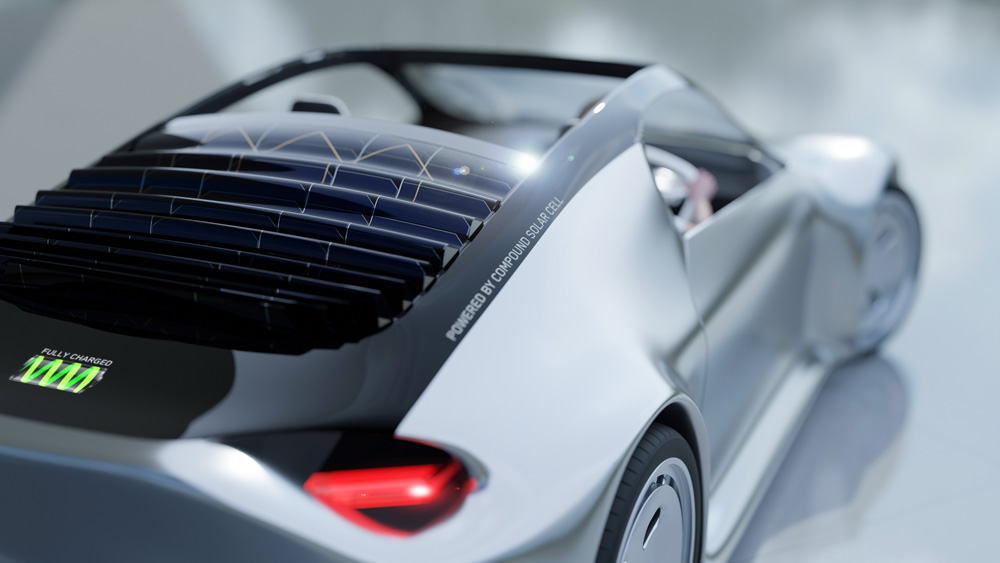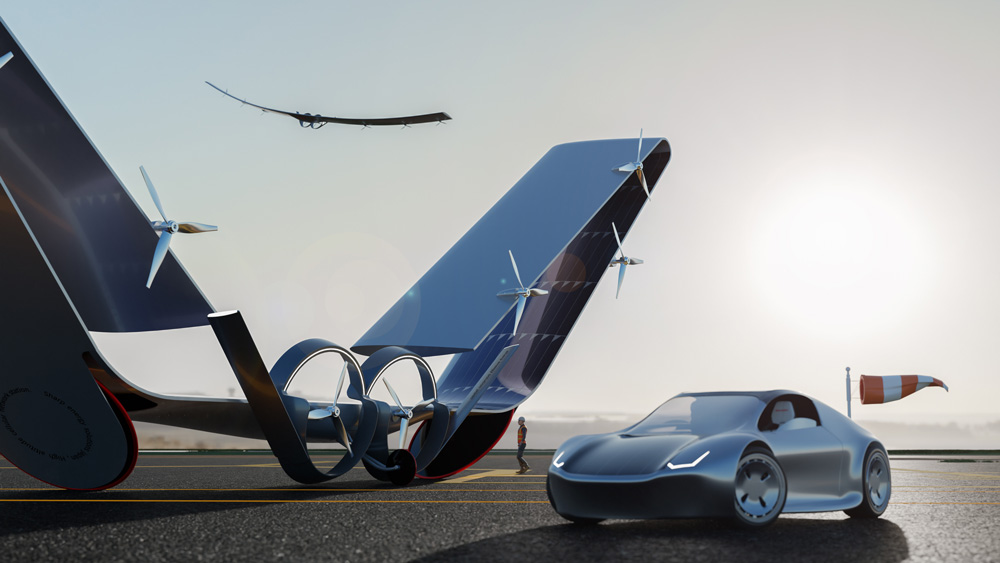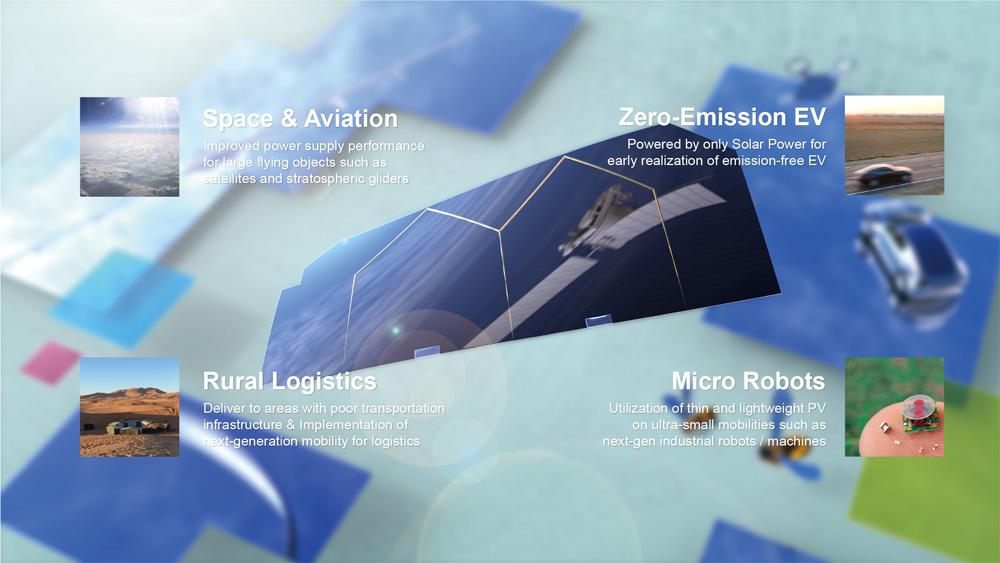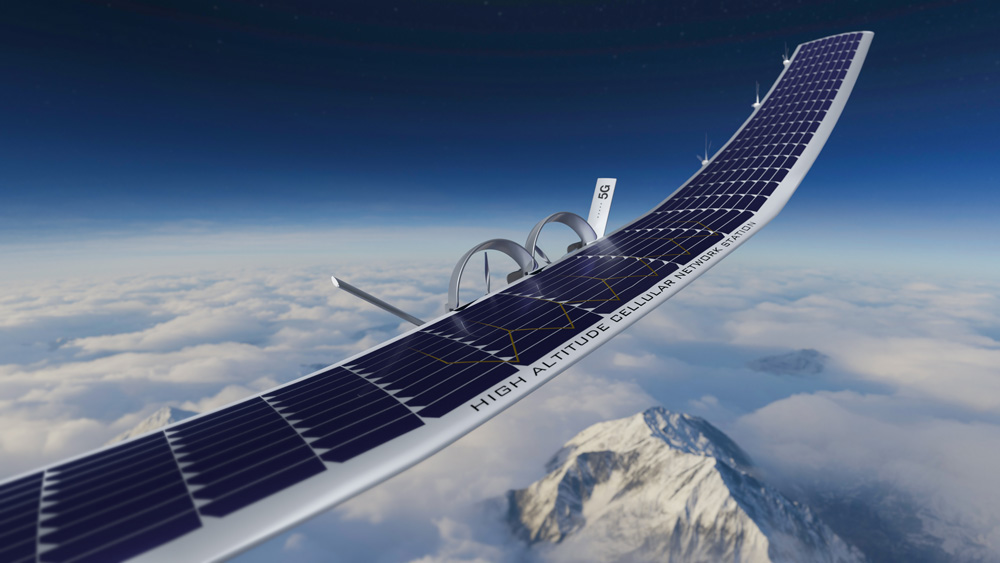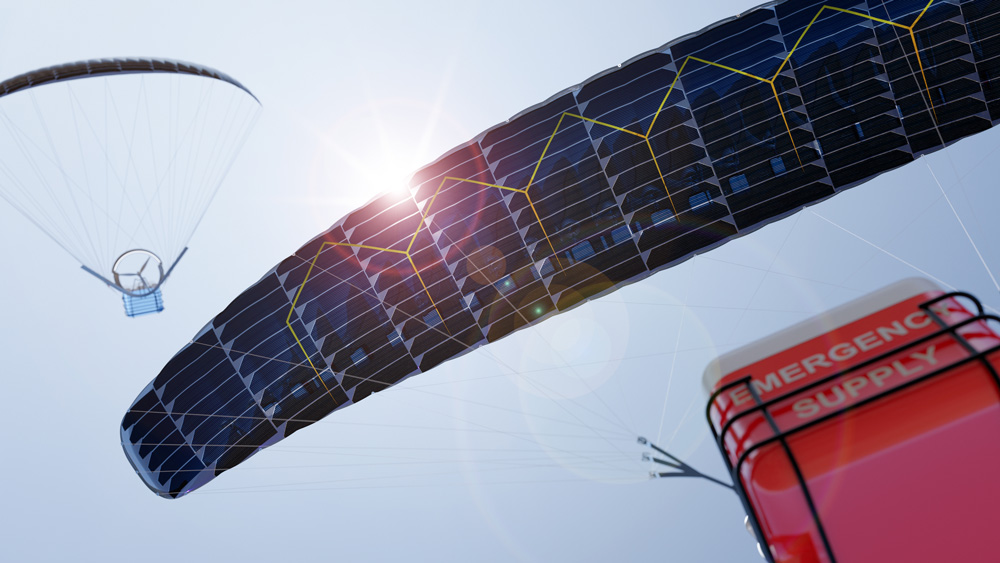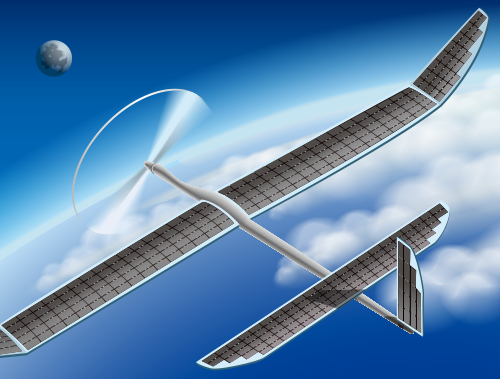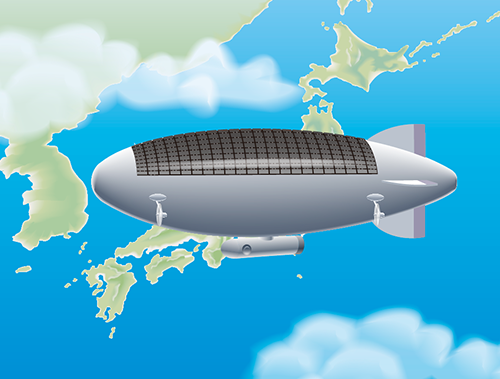High-efficiency Solar Cells
Overview
Sharp began its outer space solar business in 1976 when Japan launched Ume, the country’s first operational space satellite and equipped with Sharp mono-crystalline silicon cells. In 2001, we embarked on triple-junction compound solar cells, a business that continues to this day. More than 180 satellites have been equipped with Sharp solar cells, and dozens of them are still in orbit. In R&D, Sharp compound solar cells have broken the world record for conversion efficiency multiple times.
Our strategy
Sharp’s slogan: “From space to ground”
Outer space has been the main application area for Sharp products so far but we are now looking to enter new markets for mobility, unmanned aerial vehicles (UAVs; drones), and electric cars (EVs).
Like the field of space, these markets demand high quality, high performance, and long-term reliability.
By leveraging the experience built up in developing space applications, we can provide ideal solutions.

Greenhouse gases Observing SATellite (Photo by JAXA)
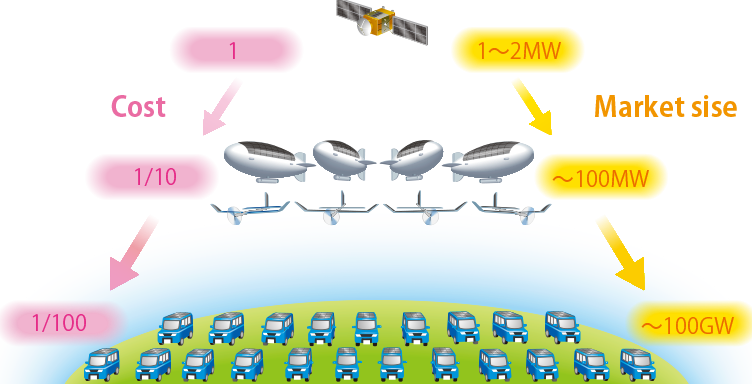
Award
Sharp Compound Solar Business wins iF Design Award, Professional Concept

Compound Solar Module for Future Mobility
To solve energy supply problems in a wide range of fields, in addition to widely used silicon solar cells, Sharp has developed solar cells using three technologies: dye-sensitized, perovskite, and compound. Compound solar cells’ benefits include light weight, high efficiency, and the ability to conform to curved surfaces. Sharp already implemented the widespread usage on artificial satellites*1, but also hold high hopes for use in aerospace, EVs, and other applications in the fields of mobility. To this end, Sharp has applied its triple-junction compound solar cell module to conduct demonstration experiments with national research institutes, car makers, and other organizations. This and other efforts have resulted in the achievement of the world’s highest*2 conversion efficiency of 32.65%. The iF Design Award recognizes Sharp’s concrete vision of achieving a net-zero society by visualizing a future in which solar cells are used on vehicles such as stratospheric aircraft and EVs, and in fields such as logistics and robotics, based on a concept “To power all mobility with just solar energy.”
- *1 Sharp is the only solar cell maker in Japan whose products are authorized by the Japan Aerospace Exploration Agency (JAXA) for use on artificial satellites. They have been used on many satellites since 1976.
- *2 As of April 20, 2023, for solar cell modules in the research stage (based on Sharp findings).
Concept video of Sharp’s compound solar modules for future mobility
The iF Design Award was launched in 1953 and is one of the world’s most prestigious product design awards.
- See more:
-
Press release: https://global.sharp/corporate/news/230420-a.html
iF Design Award page: https://ifdesign.com/en/winner-ranking/project/sharp-compound-solar-module-for-future-mobility/574902
Products
For outer space
Triple-junction (InGaP/GaAs/Ge)
cells/CICs

- Outer-space-approved rigid solar cells
- Conversion efficiency: >29.0%
(cell, average, BOL, AM0, 25C) - Bare cells/CICs (with inter-connector and cover glass)
Triple-junction (InGaP/GaAs/InGaAs)
sheets (glass type)

- Light weight, flexibility, high efficiency
- Outer-space-approved flexible cells
- For high fluence
- Conversion efficiency: >29.0%
(sheet, average, BOL, AM0, 25C) - Weight: <2.0g/W
- With by-pass diode
Sheet (Film type)
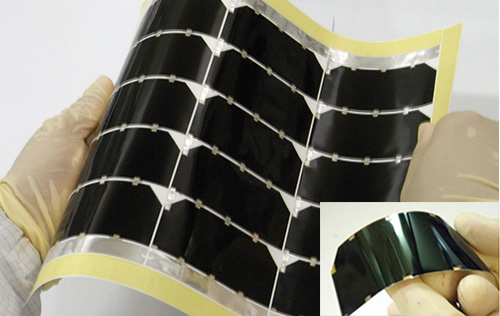
- Light weight, flexibility, high efficiency
- Outer-space-approved flexible cells
- For standard fluence
- Conversion efficiency: >29.0%
(sheet, average, BOL, AM0, 25C) - Weight: <2.0g/W
- With by-pass diode
For the stratosphere
Sheets (Film type)
Sheet module for UAVs flying in the stratosphere. This module is designed to give the best performance in a low-temperature stratospheric environment. And to capture more albedo (sunlight reflection from the earth), it can be designed with a bifacial (double-sided light-receiving) structure.
- Super lightweight, flexibility, high efficiency, surface smoothness, high reliability
- For stratospheric environments
- Weight: 0.28kg/m2
- With by-pass diode
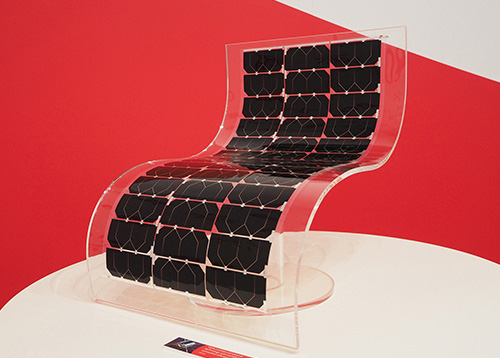
| Type | Bifacial | |
|---|---|---|
| Triple-junction | InGaP/GaAs/InGaAs | - |
| Dual-junction | InGaP/GaAs | Available |
| Single-junction | GaAs | Available |
Other solutions
We can select the type of the cell according to your needs regarding, for example, cell size, module size, packaging material, and other criteria. For applications requiring high efficiency, flexibility and light weight, our compound solar cells are the optimal solution and will inspire you to come up with new value-creating ideas.
Related products
By-pass diode
Compound solar cells are not as resistant to reverse voltage as silicon cells. We therefore recommend you attach a by-pass diode to each cell.
Since Sharp is also one of the largest by-pass diode manufactures for outer space, we can provide you with the ideal diodes.

R&D
For EV
In July 2019, we began public road trials of EVs equipped with high-efficiency solar batteries. These vehicles are equipped with high-performance Sharp solar cells with a conversion efficiency of more than 34%. These trials aim to demonstrate the possibilities for solar-powered cars, such as the potential for charge-less EVs.
News
- 2023.04.20
- Sharp Compound Solar Module Wins 2023 iF Design Award
- 2022.06.06
- Sharp Achieves World's Highest Conversion Efficiency of 32.65% in a Lightweight, Flexible, Practically Sized Solar Module
- 2019.07
- NEDO, Sharp, and Toyota to Begin Public Road Trials of Electrified Vehicles Equipped with High-efficiency Solar Batteries
- 2013.04
- Sharp Develops Solar Cell with World's Highest Conversion Efficiency of 37.9%
- 2013.06
- Sharp Develops Concentrator Solar Cell with World's Highest Conversion Efficiency of 44.4%
- A track record of over 60 years


 Worldwide
Worldwide
